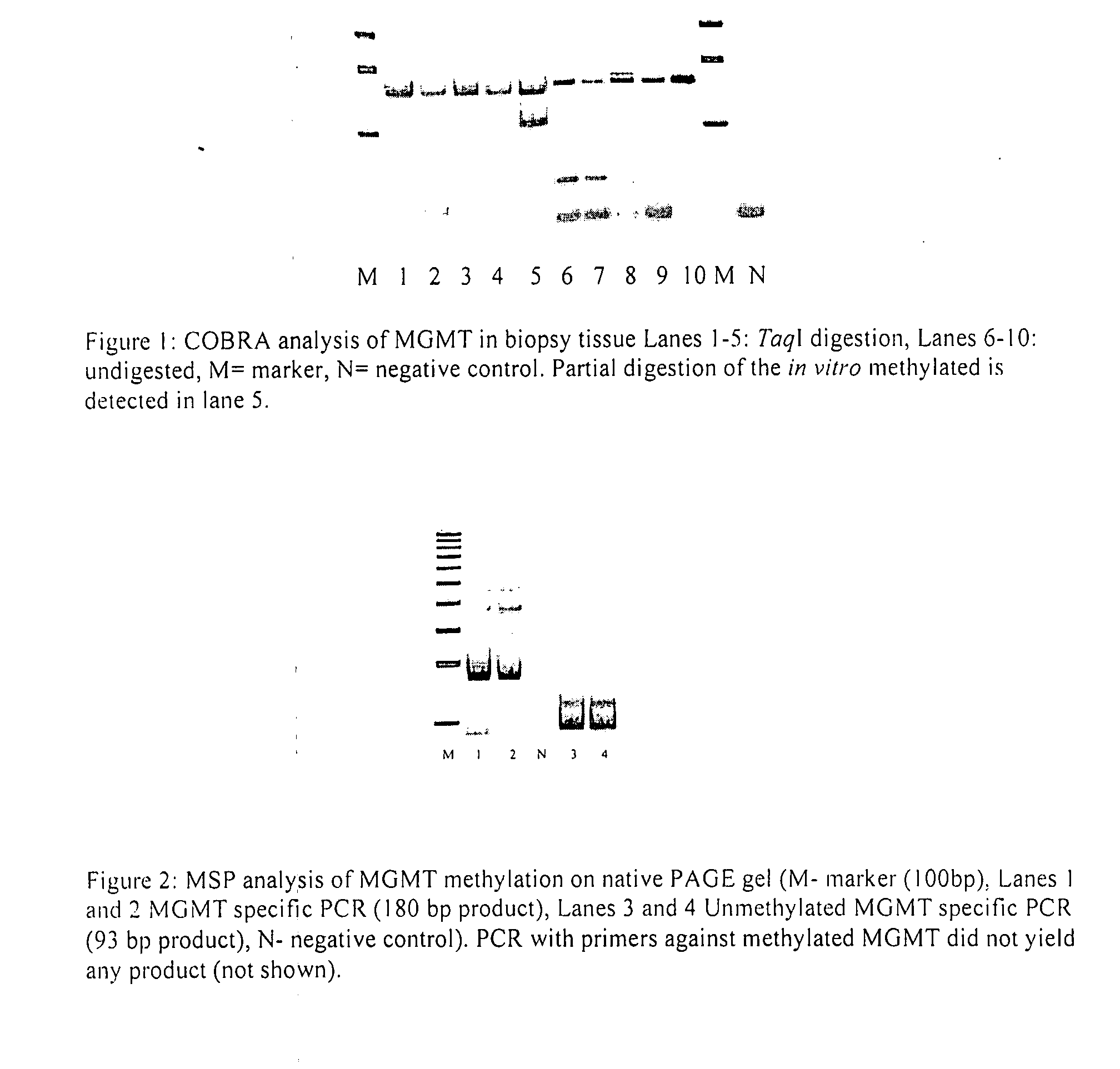Method of monitoring colorectal cancer
a colorectal cancer and colorectal cancer technology, applied in the field of colorectal cancer monitoring, can solve the problems of cancers that are not detected, patients are at an increased risk of developing additional polyps as well as colorectal cancer, and the source of aberrant methylated dna is removed, so as to achieve a high degree of sensitivity and specificity, and the probability of complete cure is virtually certain.
- Summary
- Abstract
- Description
- Claims
- Application Information
AI Technical Summary
Benefits of technology
Problems solved by technology
Method used
Image
Examples
example 1
[0026] We are currently performing a study in patients undergoing a screening colonoscopy at the UMMS GI clinic in which we enroll subjects after they have been referred for a colonoscopy, collect demographic and dietary data as well as a stool sample BEFORE the colonoscopy, obtain biopsy samples of normal colon tissue during the colonoscopy (as well as polyp tissue after pathology has been performed) and in a subset collect additional stool samples AFTER the colonoscopy / polypectomie. A total of 500 subjects are planned, so far we have completed data and sample collection in appr. 50 subjects.
[0027] Extraction of Human DNA from Feces
[0028] The largest proportion of DNA extracted from feces is of bacterial origin. In order to obtain sufficient material for methylation analysis of bisulfite converted or unconverted DNA by PCR we have optimized our extraction protocol. Instead of using bead beating for efficient cell lysis we are using a more gentle procedure that omits extensive enz...
example 2
[0033] To establish methods to reliably detect aberrant methylation pattern in stool samples Analysis of aberrant methylation pattern in stool DNA requires a robust protocol for DNA extraction followed by bisulfite conversion, (quantitative) amplification and restriction analysis.
[0034] DNA Extraction, Bisulfite Conversion and Methylation-Specific PCR Analysis from Paraffin-Embedded Proximal Colon Tissue
[0035] We have established a protocol to extract DNA from paraffin-embedded normal as well as polyp tissue. After removal of excessive paraffin by xylene and release of DNA from the blocks we follow the DNeasy extraction protocol for animal tissues (Qiagen). The extraction yields >0.5 μg of DNA >600 bp in length. This amount is sufficient for 4-8 bisulfite conversions with the EZ DNA kit (ZYMO Research).
[0036] Each bisulfite conversion yields sufficient template DNA for up to 10 methylation specific PCR reactions, allowing us to test a large panel of prospective markers without th...
example 3
[0044] To Determine if Aberrant Methylation Pattern Detected in Polyp Tissue can be Detected in Pre- but not Post-Colonoscopy Stool Samples Collected from the Same Subject
[0045] It is assumed that the aberrant methylation patterns detected in stool are due to shedding of cells from a preneoplastic lesion into the lumen. It is not known if methylation pattern in the promoter regions of these genes return to normal after polypectomie, which should remove the source for the aberrantly methylated DNA. If the patterns do disappear than a positive screening test for reappearance of the aberrant pattern over time might indicate the formation of new preneoplastic lesions.
[0046] We will collect a stool sample BEFORE the colonoscopy, then obtain biopsy samples of normal colon tissue during the colonoscopy (as well as polyp tissue after pathology has been performed) and in addition collect stool sample AFTER the colonoscopy / polypectomie. For the studies proposed here we will choose subjects ...
PUM
| Property | Measurement | Unit |
|---|---|---|
| time | aaaaa | aaaaa |
| Methylation frequency | aaaaa | aaaaa |
| temperature | aaaaa | aaaaa |
Abstract
Description
Claims
Application Information
 Login to View More
Login to View More - R&D
- Intellectual Property
- Life Sciences
- Materials
- Tech Scout
- Unparalleled Data Quality
- Higher Quality Content
- 60% Fewer Hallucinations
Browse by: Latest US Patents, China's latest patents, Technical Efficacy Thesaurus, Application Domain, Technology Topic, Popular Technical Reports.
© 2025 PatSnap. All rights reserved.Legal|Privacy policy|Modern Slavery Act Transparency Statement|Sitemap|About US| Contact US: help@patsnap.com


